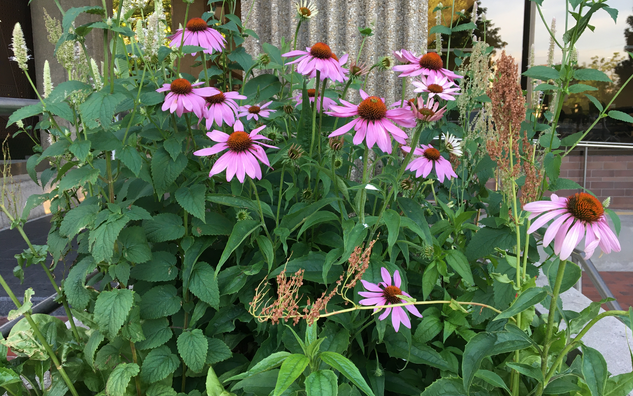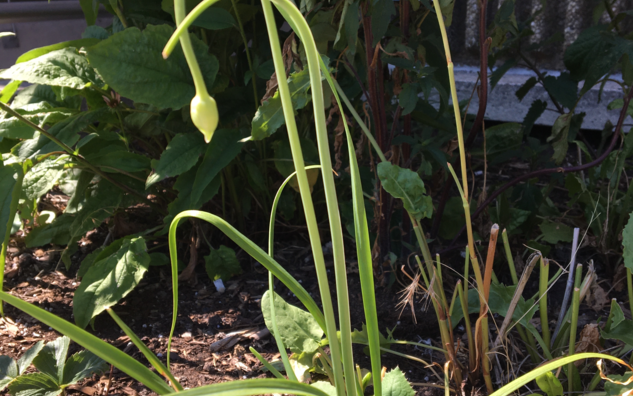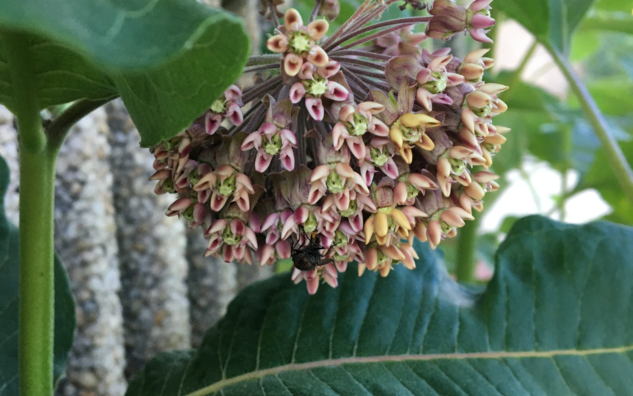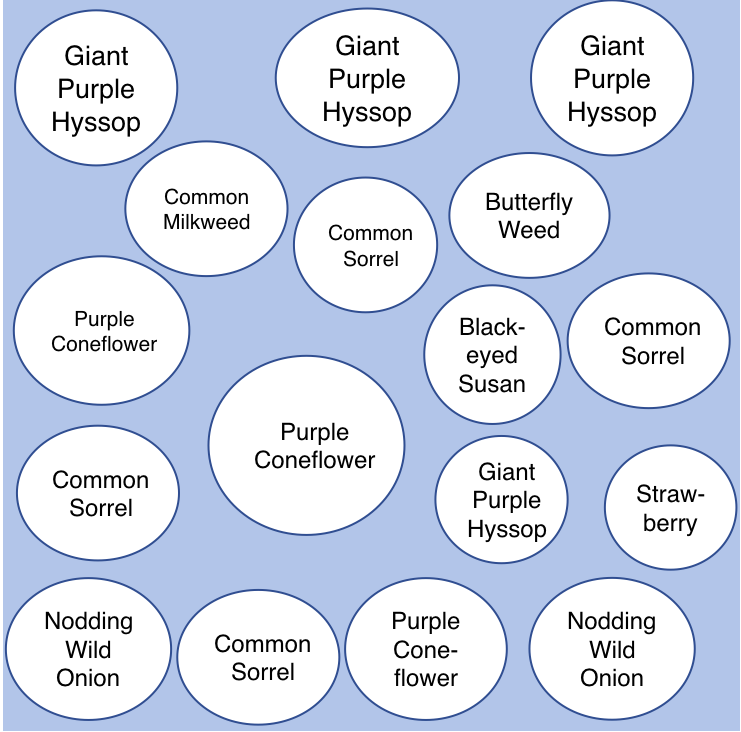Equity & Inclusive Education Garden

This garden highlights the aspirational values for education for equity, social justice and inclusivity. The plants in this garden bed were chosen to symbolize diversity and difference found within the natural world, with recognition of how these differences are negotiated and respected so that each plant can flourish. The inclusion of plants that are often overlooked symbolize those who are overlooked and silenced, recognizing the importance of hearing and honouring marginalized voices and perspectives. The featured plants have "roots" in various communities and may play significant roles in cultures around the world. It is hoped that through the diversity represented in the garden viewers will see reflections of themselves, their cultures and communities. Through this garden we hope to invoke a sense of belonging, and invigorate a critical consciousness of our own actions to help better shape and transform the places in which we live.

Giant Purple Hyssop - Agastache scrophulariifolia
Lavender hyssop is very fragrant; all parts of the plant are highly aromatic. Because of this, it is commonly found in gardens for the visually impaired and also attracts a range of pollinators. It is edible with a wonderful licorice taste and is often consumed in salads and steeped in teas. Medicinally, lavender hyssop has been used to open up the airways.

Purple Coneflower - Miinaande Giizisobagoons - Echinacea pallida
Echinacea is a plant that is native to North America and has many uses. Medicinally, it has been used extensively in the treatment of colds and infections as it is thought to stimulate the immune system and decrease inflammation. Drought tolerant, it blooms in beautiful pinks and purples in the summer and attracts a multitude of pollinator species. In the Equity Garden, the Pale Purple Coneflower represents the ability to make space for a diversity of life forms, promoting a sense of interspecies equity.

Common Sorrel - Rumex acetosa
Like many native plants, and despite its many uses, common sorrel has been labelled as a weed. Its leaves are edible and tasty in salads or on their own. Wood sorrel has small, delicate creamy pink blooms. Like other plants recognized as 'weeds', its presence is discouraged from many contexts but here, we prefer to see it as a valued member of the garden community, representing our value of inclusivity.

Nodding Wild Onion - cîgaga' wûnj - Allium cernuum
Another native plant that can be found in our garden is the Nodding Wild Onion, an interesting and versatile species. Its thin long leaves resembles a mixture of onion leaves and graceful grass, but it blooms in a delicate white-rose drop shaped flower. With edible bulbs, this plant can be found in a multitude of habitats, from prairies and meadows to open woods. Its presence in our Equity garden represents the richness in being versatile and able to adapt to a diversity of environments.

Black-eyed Susan - Rudbeckia hirta
Black-eyed Susans are hardy and colourful blooms. They attract pollinators including bees, birds, and butterflies. They are late-summer bloomers and are included in our Equity Garden as a reminder of the importance of respecting and celebrating different flourishing times. Their blooms are long lasting with their seedheads providing food for birds well after the flowers have gone. Black-eyed Susans are familiar and self sow and therefore, bloom year after year. Their bright colours make them visually appealing and they can be easily shared and rooted by others.

Everfruiting Strawberries - Fragaria x ananassa
Strawberries, or heart berries (ode’imin) as they are known by the Anishinaabe (Ojibwe), are a gift that carries many teachings. Starting in June (or Ode’imini-giizis, the Strawberry Moon) this variety will provide fruit, and the lessons that come with it, all summer long. The June strawberry harvest is a time for people to come together and work towards strong relationships within families and communities, work that is critical to advancing equity and justice.

Milkweed - Asclepias syriaca
Milkweed has light pink flowers and contains a bitter white sap that protects it from predators. The sap also is essential nectar for many butterfly species, including monarchs. Milkweed has been used for fiber, food, and medicine by Indigenous peoples in this region since time immemorial. It has been included in the Equity Garden here to symbolize the importance of relationships and reciprocity.

Butterfly Weed - Asclepius tuberosa
Similar to its cousins the Common and Swamp Milkweed which are found throughout the Learning Garden, the Butterfly Weed plays an important role in supporting a wide range of pollinator species. As its name suggests, its bright orange flowers attract many species of butterflies who help to pollinate other plants in the garden. Not intentionally planted and instead grown from a seed likely deposited by an animal or the wind, it serves as a reminder in the Equity Garden of the power of one little seed to make a change.
Garden Map

Resources on the Equity and Inclusive Education Garden
Articles and Books:
Dyment, J. E., & Bell, A. C. (2006). Our garden is colour blind, inclusive, and warm: Reflections on green school grounds and social inclusion. International Journal of Inclusive Education, 12(2), 169-183.
Johnson, S. (2012). Reconceptualising gardening to promote inclusive education for sustainable development. International Journal of Inclusive Education, 16(5-6), 581-596.